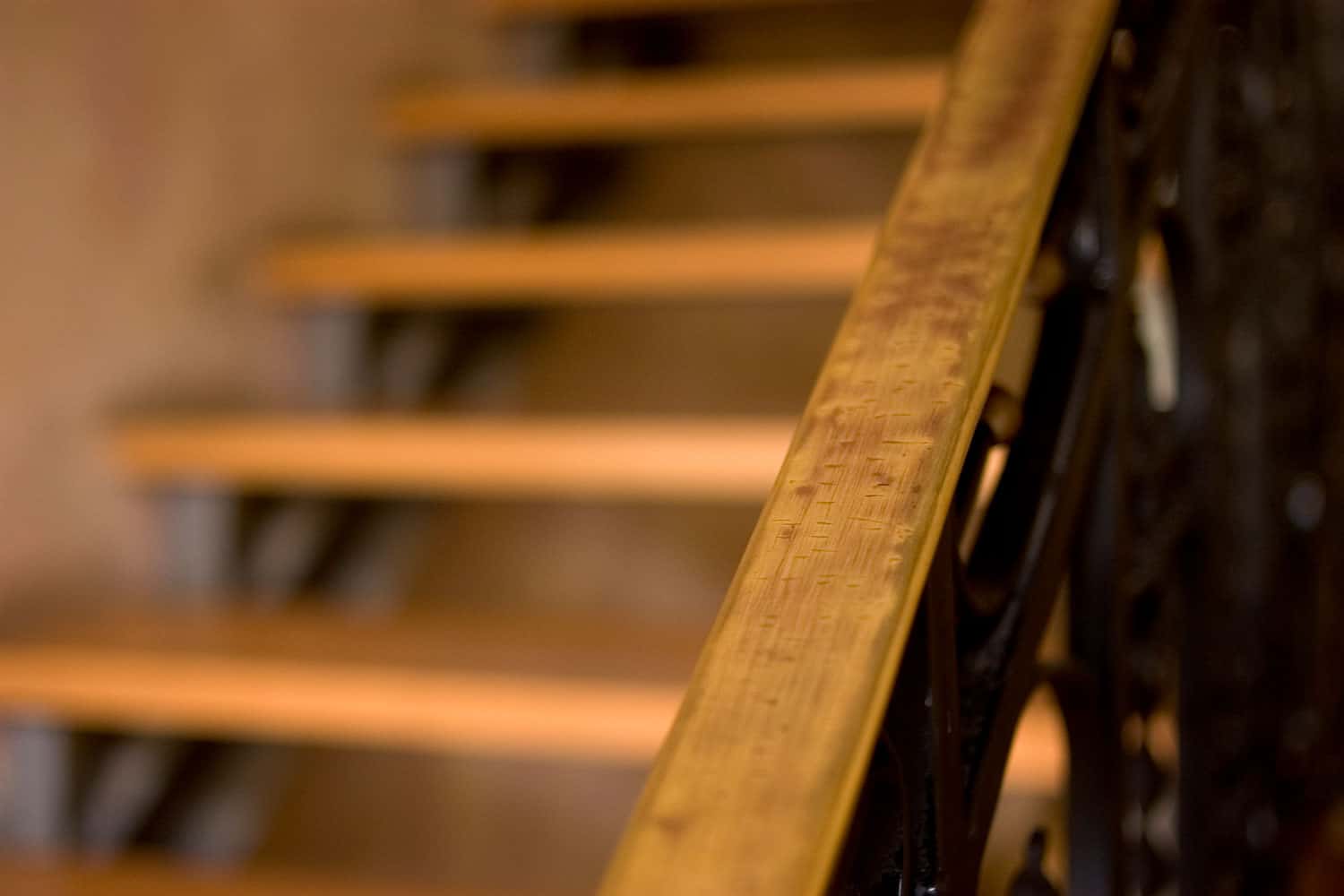Adding stair treads onto your current stairway is a great way to not only protect your stairs but also improve their safety. Considering this home renovation, it is definitely a great idea, but you may be wondering how actually to go about it. Thankfully, we've extensively looked into this process and done the research so that your stair tread installation can be as easy and hassle-free as possible.
First, you must plan out the job; be sure to take accurate measurements. Prepare the stairs by removing the existing flooring, if there is any, and remove any overhang from the current lumber treads so that they're flush with the risers. Alternatively, you can add directly to the risers instead of removing them from the tread. Measure again to size and cut the new tread -- adhere and screw the tread to the stairs.
However, that is a simplified process. You're going to want to keep reading because we're going to go into those steps with more detail and also answer some other questions you may have about installing stair treads.

Installing Tread Over Existing Stairs
Measure Accurately
Before you can even consider buying the treads, you must first know the needed size. The first step in many construction jobs is to measure, and this is no exception! After taking the time to ensure your measurements are accurate the first time around, you'll have to decide if you want to go with made-to-order treads or cut them yourself.
If you want to cut them yourself, you'll need a large saw, preferably electric to promote ease of cutting and making sure the lines are straight. If you already have the equipment you'd need, then you can save some money by cutting them yourself.
Prepare the Stairs
Once you're ready to actually install the treads, you'll need to prepare the stairs. You will have to remove whatever flooring was applied last, which will leave the lumber construction tread exposed. Once at that stage, you'll want the tread and riser to be flush so that the lumber tread isn't hanging over the riser.
You can either add to the riser or remove it from the tread to achieve this. Just keep in mind that you'll be bulking the stairs a bit by adding.
Measure (Yes, Again!) to Size/Cut Tread Accurately
Before adding the treads, even if you ordered them pre-cut for the job, make sure to measure each tread individually to the stair it will be placed on. It is really important to take your time and ensure that each is measured because it is very likely that there will be discrepancies, so you don't want to cut them all at once after measuring one stair and end up with many unusable treads.

Adhere & Screw Tread to Stairs
Now that the treads are ready, the stairs are ready, and you are ready, it's time to install the treads. When you're ready to set the tread down, apply a generous amount of construction adhesive to the lumber tread.
After placing them and finding the points above the risers where your screws will go, drill thin holes before screwing the risers down to ensure that the wood won't crack and split when the screws go through. You can also drill a hole for the head of the screw to fit in so that you can cover it with wood putty, filler, or a plug afterward to hide the screw. Then apply your flooring if need be, and congratulations, your work is over!
Should You Nail Or Screw Stair Treads?
When debating to either use nails or screws to fasten down the treads to the existing stairs, you'll definitely want to go with screws. In almost all applications, screws can handle more force and remain stable against pressure.
Stairs take heavy abuse, especially when used frequently, and if the tread comes loose when you were on the stair it could be very dangerous. You'll want to use screws over nails to ensure that your treads will remain fastened in place even when a lot of weight is applied.
Also, if you use nails when installing the treads, you may notice far more squeaking due to the weaker stability. It may not seem like a big deal, but you'll most likely be happier with the job if you don't have to hear it every time you run downstairs for a quick snack from the fridge.
Do Stair Treads Have To Match The Floor?
One of the most amazing things about home renovation is the freedom to let your imagination and creativity run wild. However, you should keep in mind when planning this renovation that your stairs are basically an extension of the floor.
You can, of course, use any material that you'd like, but when the stairs clash with the floor, it can be very noticeable and even jarring at times. One easy way to ensure that the design will look clean and professional is to make things match.
Can I Use Liquid Nails For Stair Treads?
We highly, highly recommend using a heavy-duty adhesive for this job, but not alone. Using both hardware fasteners and a liquid adhesive will all but guarantee that the treads are not coming off the stairs.
However, using a construction adhesive alone is essentially playing a risky game. If you can use both screws and Liquid Nails, then that is the best course of action to take. If you're capable of only one, skip the adhesive and go for the screws.
Click here to see Liquid Nails construction adhesive on Amazon.
Now it is possible, and using adhesive alone has definitely been done before. Really, we have to stress the importance of safety. If you're planning on only using Liquid Nails or another heavy-duty adhesive, take a moment to consider the strain placed on the stairs and if it will safely hold.
What Is The Best Flooring To Put On Stairs?
Hardwood And Carpet
If you're matching the stairs to the floor, your choice is already made for you --but we're going to talk about some options that you have for your design. Two very common and very sensible choices you have are hardwood and carpet.
Hardwood will look clean and sleek, it will be easier to clean, and it is also a pretty durable flooring, meaning you aren't going to see wear and tear for a while. On the other hand, carpet is going to feel a lot nicer on your feet, and it's going to insulate heat better so you won't get cold feet, literally. Each has their pros and cons and are definitely worth exploring.
Vinyl
Vinyl is becoming a more popular choice with consumers as of late, and there are definitely reasons to choose vinyl over more traditional flooring. It is very easy to install and rather inexpensive compared to other flooring options, so it's very accessible to many. However, it won't last nearly as long as other floorings, and it can be damaged more easily, so if the stairway is under frequent foot traffic, you may not want to go this route.
Tile
One last option that we have to mention is tile. Tile is a hit or miss material used as stair flooring. Depending on how it's done, it can look very tacky, or it can look very elegant.
Another thing to keep in mind is that it can be cold and slippery. It's also worth noting that you can achieve a tiled look without the tile feel with vinyl. Despite all those drawbacks, you can still achieve great looking stairs that will be the envy of the neighborhood with tiling.
Time To Step Up!
Now that you've reached the end of the article, you should be ready to start planning out your stair tread installation right away. Remember that measuring each step individually is very important as there is a high chance they will need to be slightly different lengths. Now you can get to work and know that you will end up with a result to be proud of!
If you were able to find what you were looking for in this article, please consider checking out a couple of our other posts:

